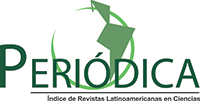Staphylococcus aureus and meticillin-resistant Staphylococcus aureus (MRSA) in health professionals and the interfaces with nosocomial infections
Keywords:
Staphylococcus aureus, MRSA, Health worker, Hospital infection.Abstract
Staphylococcus aureus is an important microorganism in the nosocomial environment, mainly disseminated by the hands of health professionals. Based on this understanding about the theme, we decided to carry out this study. Objectives: assess the prevalence of Staphylococcus aureus and meticillin-resistant Staphylococcus aureus (MRSA) in medical and nursing team professionals from a health institution in Goiânia-GO, and the interfaces with nosocomial infections; and characterize the phenotypic profile of Staphylococcus aureus. This study was carried out with the medical and nursing teams working at the intensive therapy, medical clinic, surgical clinic, gynecologic-obstetric units and surgical center of a health institution in Goiânia-Goiás. The research was carried out between August 2005 and July 2006. The saliva of 268 professionals was collected at 3 different moments, which resulted in 804 analyzed samples. The samples were seeded in mannitol agar and the colonies that developed were counted and submitted to phenotyping and antimicrobial susceptibility test, determined by the disk diffusion method. The results were submitted to quantitative analysis, through descriptive statistics, using Epi-Info software (version 3.3.2-Center for Disease Control). Two hundred sixty-eight health professionals agreed to participate in the research, of whom 804 saliva samples were analyzed; in this group, Staphylococcus aureus were isolated from 404 samples, corresponding to 227 colonized professionals. The analysis identified that 9.7% (26/268) of the examined health professionals were carriers of MRSA. The MLSB (macrolides, lincosamides and streptogamines) phenotype was detected in 11.2% (46/409) of the Staphylococcus aureus, 8.7% of which were oxacillin-resistant. With respect to the profile of health professionals colonized by MRSA in terms of professional category, 61.5% were nursing technicians, 19.2% were nurses, 15.4% were physicians and 3.8% nursing auxiliaries. As to the work place of health professionals affected by MRSA, the clinical ICU (26.9%) was identified, followed by the medical clinic (19.2%), surgical ICU (15.4%), surgical clinic (15.4%), gynecologic-obstetric clinic (15.4%) and surgical center (7.7%). Lecithinase production was identified in 48.5% of the Staphylococcus aureus isolated from (130/268) the health professionals who participated in the three sample collections. As to health professionals adherence to individual protection equipment (IPE), during direct client care, 92.9% used IPE and 3.4% did not, while questionnaires were not recovered for 3.7%. Among professionals who used IPE, gloves were the most used equipment by 93.7%, followed by masks (92.9%) and apron (88.4%). Although only 3.4% did not use the IPE, this behavior is preoccupying in view of their justifications: indifference, forgetting, impaired visual appearance, among others. The colonization of health professionals by meticillin-resistant Staphylococcus aureus is a reality, constituting a potential source of severe nosocomial infection that can impact the health of clients, relatives and professionals themselves. The results point towards health professionals’ fragile adherence to prevention measures. Thus, the elaboration of specific strategies about MRSA is recommended, directed at these professionals, with a view to their implementation at health institution, health professionals’ adherence to these measures and, consequently, decreased hospital infection rates.
Key words: Staphylococcus aureus; MRSA; Health worker; Hospital infection.
Downloads
Downloads
Published
Issue
Section
License
Copyright (c) 2009 Revista Eletrônica de Enfermagem

This work is licensed under a Creative Commons Attribution 4.0 International License.














